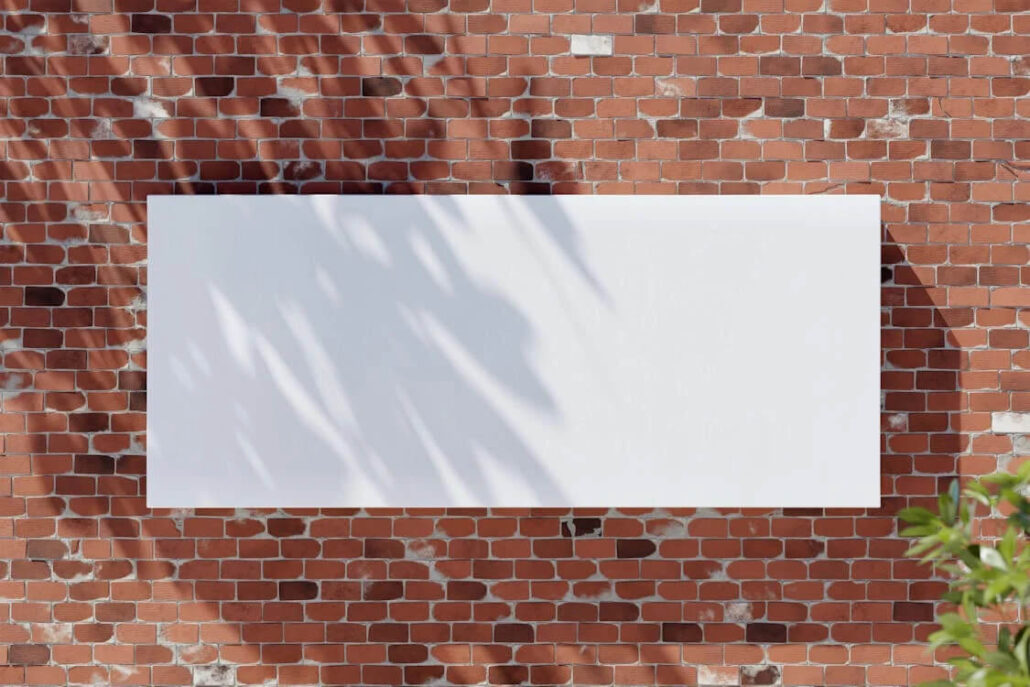From private parties and big public events to the everyday operations of schools, hospitals and businesses, many different occasions call for the use of banners. They can be a powerful tool for promoting an event, sales item, or important message. But if displayed incorrectly, they lose a lot of their impact.
If you’re considering or have already ordered a custom banner, you may be wondering what the best way is to hang it. In the article below, we consider different types of banners, various methods for hanging or displaying them, and tips for ensuring your banner is a success.
For further information and personalised advice regarding our banner signage solutions, contact the team at Signworks today.
Where are Banners Displayed?
Before you start hanging, it’s important to decide where your banner should go – and why. The right location will ensure visibility and maximum impact.
Here are some of the most common locations for displaying banners.
- On outdoor walls and between buildings. Banners displayed on surfaces in busy outdoor areas tend to be for advertising purposes.
- On lamp posts or poles. Banners on or between poles are also typically used for advertising.
- On fences. Fence banners are used for advertising and a range of public or community messages. For instance, they may be used at sporting events or festivals, or on construction sites.
- Indoor walls and ceilings: Banners on the interior walls or ceilings of businesses and homes are used for advertising, decorative or private purposes.
- Windows: Banners in windows are another common form of advertising.
What Type of Banner Do You Have?
Banners tend to be low-maintenance, and don’t require complicated tools and accessories to hang correctly. However, the type and material of your banner still needs to be considered.
Some of the most common banners include:
- Durable vinyl banners, ideal for outdoor use.
- Perforated mesh banners, also great for outdoor use and particularly durable in windy conditions.
- Lightweight fabric banners, more suitable for indoor events.
- Paper or cardstock banners, ideal for temporary indoor use.
Indoor-friendly fabric or paper banners may require some sort of frame, whereas the outdoor-friendly banners, like those made of vinyl and mesh, often have grommets along the edges or corners.
What Are the First Steps?
Below are several methods for hanging different types of banners. But before you get stuck into it, make sure you do the below steps first.
- Decide on the best location for your banner. For instance, as we’ve already outlined, a thicker banner made from mesh or vinyl will be more suitable to outdoor environments and conditions.
- Carefully remove your banner from any packaging.
- Unroll your banner and/or lay it out on a flat surface.
- Smooth out any wrinkles and check for holes and tears.
- Make sure you’ve got all the hanging devices and accessories you may need.
Hanging Banners With Grommets
Let’s get into the best hanging methods for banners with grommets.
Grommets are metal-ringed holes inserted along the edges or corners of a banner. They are designed to add extra reinforcement and make your banner less susceptible to tearing.
1. Ropes or Bungee Cords
Ropes and bungee cords are perfect for hanging banners, particularly outdoor ones. We typically recommend ropes or cords made from nylon, polyester or polypropylene. They are strong, flexible and able to withstand strong winds or other harsh weather conditions.
To get started, thread your rope or cord through the grommets on the edge of the banner. Then tie your rope or attach the hooks on your bungee cord to a fixed anchor point, such as a fence, ceiling, pillar, post or hook.
2. Zipties
More permanent than cords or ropes, zip ties are also in widespread use, for a range of outdoor and indoor events and purposes. They are particularly great for hanging banners on scaffolding or fences.
First, thread your zip ties through the grommets of your banner, then secure the banner to a fence or other anchor point.
3. Carabiners
Carabiners or hanging clips are another useful method for hanging banners, particularly to chain link fences.
They can be guided through the grommets on your banner and clipped to the fence or another solid object.
4. Suction Cups
Suction cups are great for hanging banners on flat, smooth surfaces, like glass. They are typically only suitable for smaller and lightweight banners, as the weight of larger or more permanent banners will cause the suction cups to come unstuck.
Suction cups have hooks attached that feed into grommets, ensuring a secure display. Hang your banner on one side using the first suction cup and hook, then smooth out the banner, and hang the second side.
5. Hooks or Screws
Hooks and screws are another useful method for hanging or mounting banners, particularly to walls.
Before you hang your banner, just make sure the hooks, screws and any other parts involved won’t damage the material of the walls.
Hanging Banners Without Grommets
If your banner doesn’t have any metal-ringed grommets, it might have pole pockets along the edge instead, or neither option.
You still have lots of hanging options, including the below.
1. Rope or Pole for Pole Pockets
Pole pockets are areas of doubled-over fabric that allow for the insertion of ropes or poles. A banner may have a single pole pocket along one edge, or pole pockets along all four edges.
Banners with pockets are often used for parades and other similar events, as they can easily be hung up with ropes or poles, or carried around by hand.
2. Adhesive Hooks or Strips
Adhesive hooks or strips are great for lightweight and/or temporary banners. Simply attach the sticky hooks or strips to your banner, then apply the adhesive surface to a wall or window.
3. Double-Sided Tape or Velcro
Double-sided tape or velcro are also a quick and easy fix for hanging temporary banners. Apply your sticky adhesive to the back of your banner, then attach the banner to the desired surface.
4. Clamps or Clips
Clamps or clips are another great option, particularly for hanging fabric banners on some sort of frame or wire. They are useful for hanging banners without damaging the material.
5. Magnets
Strong magnets are sometimes used to secure banners to metal surfaces. However, if not strategically positioned, they can be a little flimsy.
How To Position Banners Without Hanging
If you have a banner to display but don’t want to hang it up, here are some easy and practical alternatives.
1. Freestanding Displays
Freestanding banner displays are great for conveying a message at ground level. Portable and easy to set up, they are used for a wide range of occasions, including trade shows, business conferences, and sales.
A freestanding display might involve an A-frame stand, or an adjustable banner known as a retractable banner. Retractable banners can be easily folded up and carried around when not in use.
2. Table Displays
If you can’t hang your banner, you can still show off your message by displaying or draping the banner on a flat surface or tabletop.
Trust Signworks With Your Banners and Signage
At Signworks, we understand that a successful banner is not only designed with flair, but installed and used correctly. We pride ourselves on not only providing high-quality banners for a range of occasions, but ensuring the location and installation of our work is purposeful and effective.
Whether you’d like to order a banner, or need a little advice for hanging one, get in contact with our team at Signworks. Our wide-ranging signage solutions are designed to instantly elevate your event or brand.

